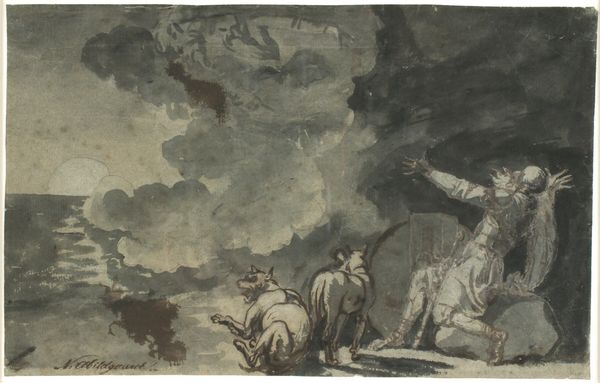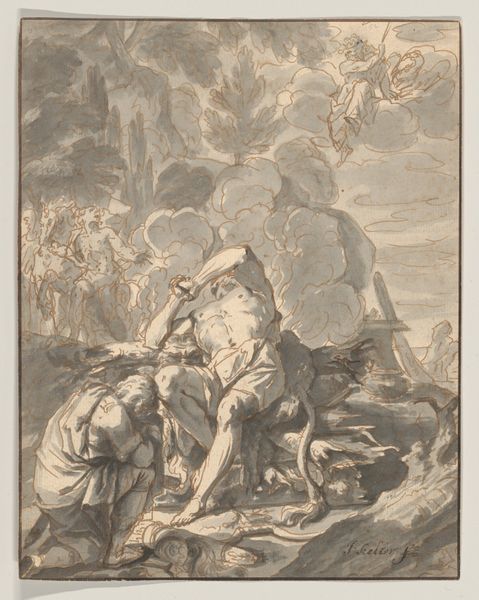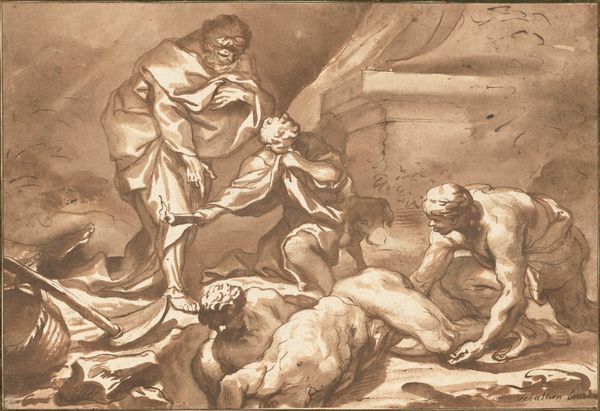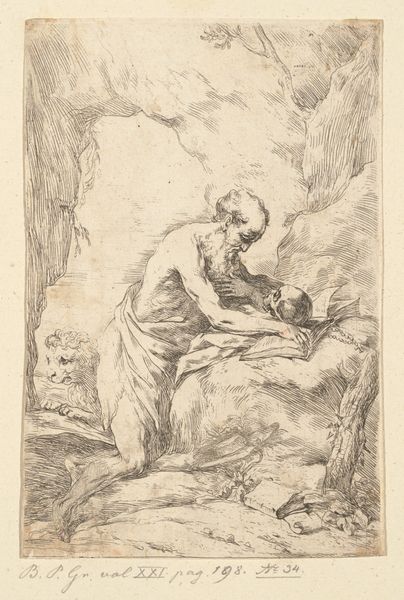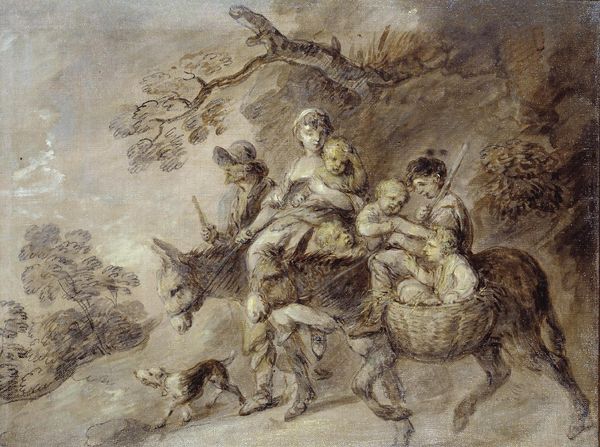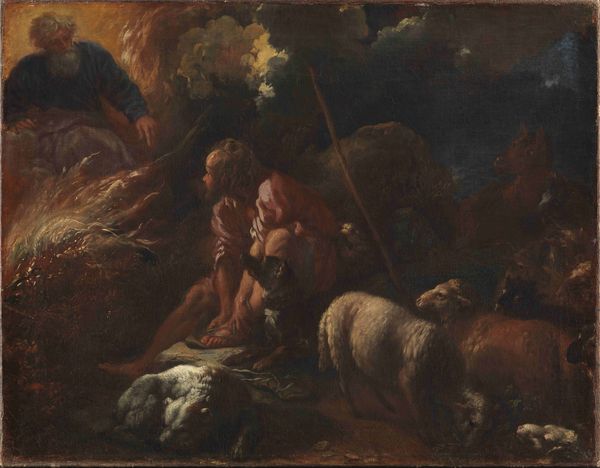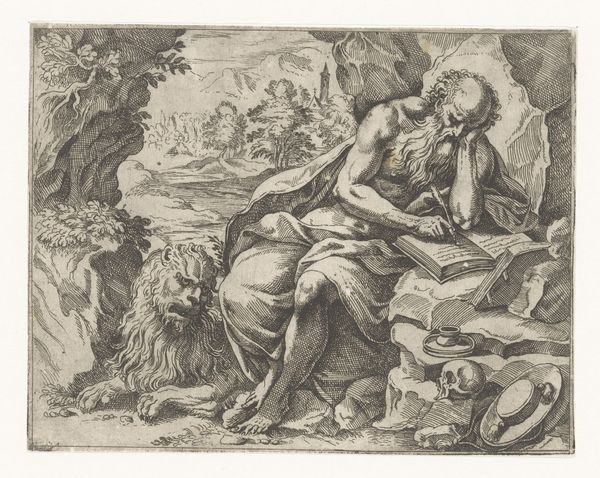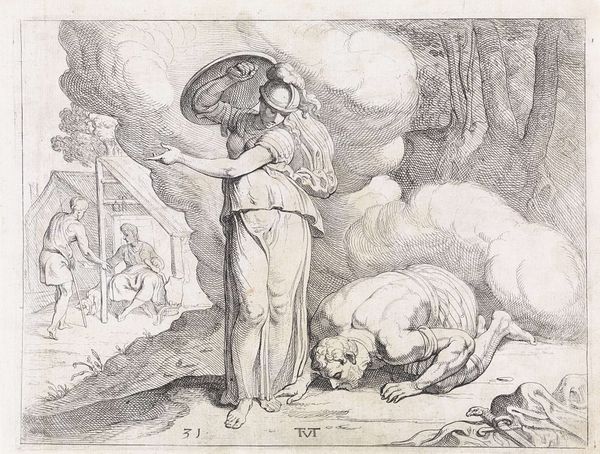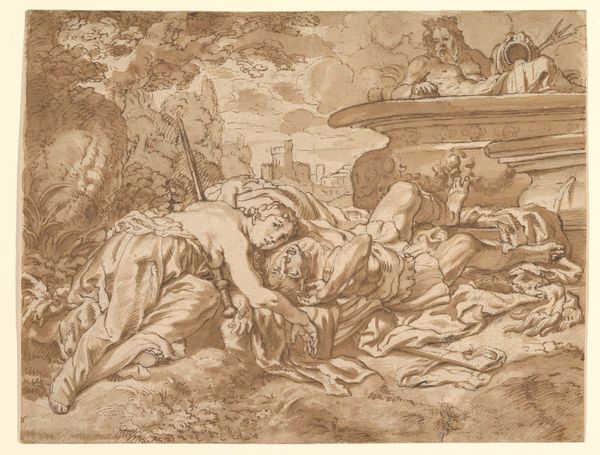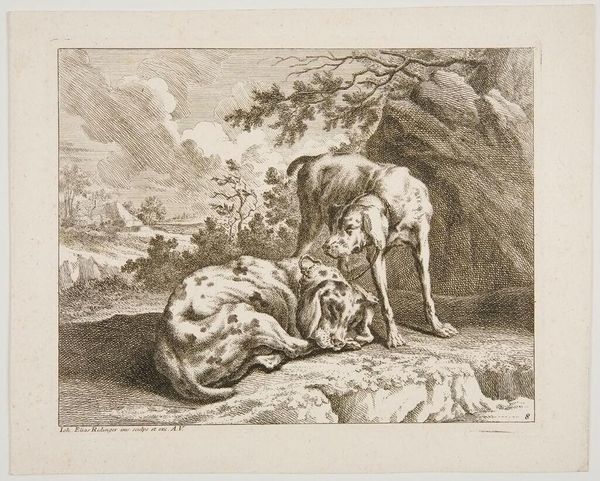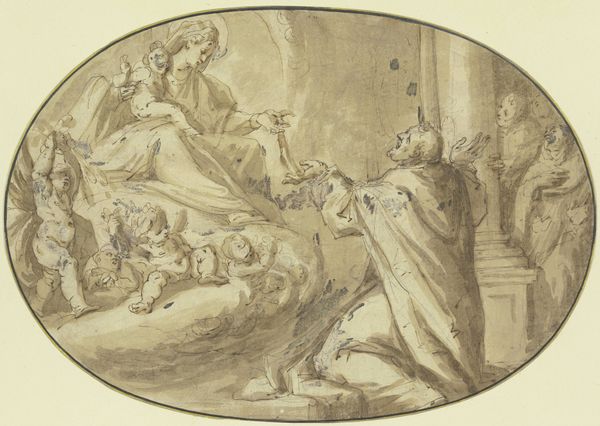
drawing, charcoal
#
portrait
#
drawing
#
narrative-art
#
landscape
#
charcoal drawing
#
figuration
#
oil painting
#
romanticism
#
charcoal
#
history-painting
#
academic-art
#
charcoal
Copyright: Public Domain: Artvee
Curator: Immediately striking. It evokes a sense of desolate abandonment. The monochromatic palette and the stark contrast between light and shadow create an intense atmosphere. Editor: This is Benjamin West's drawing, "The Disobedient Prophet," created in 1793. It is rendered in charcoal and watercolor, showcasing a biblical scene. The narrative draws from the Old Testament. Curator: Notice how West uses line and wash to model form. See the prophet, sprawled in what looks like anguish. Is this failure we see represented? And the lion – not attacking but present, watchful. The dynamism between the figures compels. Editor: It speaks volumes about West's engagement with narrative painting during the Romantic era. We need to remember the context. Here is an artist operating within a patronage system dependent upon moral and religious parables for instructional art. What story could an audience readily pull from these materials? Curator: I think that it is an eloquent response to themes of faith, disobedience, and consequence. His use of chiaroscuro enhances the emotional intensity. And in the Romantic period, such contrasts had enormous social currency, allowing the exploration of individual experience and extremes of emotion. Editor: Consider the process—charcoal as a readily available material, the quick sketches enabling rapid dissemination of imagery. West understood his market. There’s the economic imperative too, to supply visually potent, biblically sanctioned content for both public consumption and private contemplation. This wasn’t solely about West, but rather also the societal consumption of such images. Curator: You’ve offered a glimpse into the image as commodity, yes. But in return, look closer still: Observe West's subtle compositional choices; he doesn’t give the viewer much to ground oneself, creating, instead, this off-kilter imbalance that adds significantly to its dramatic charge. It's not merely an object. Editor: Fair point, it's where these things coalesce, the artist, the method and then the materials and finally the society where the final work lands. I suppose together, we find its most meaningful telling.
Comments
No comments
Be the first to comment and join the conversation on the ultimate creative platform.

